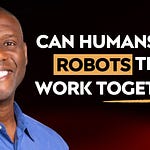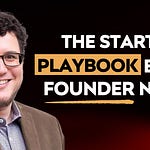In today’s rapidly evolving business world, the role of people analytics and workforce planning has never been more critical. As companies continue to navigate complex work environments shaped by AI, remote work, and an increasingly dynamic talent pool, one thing is clear—organizations need data-driven insights to make smarter decisions about their human capital.
In this post, we’ll dive deep into the insights shared by Cole Napper, a globally recognized expert in people analytics, workforce planning, and talent intelligence. As the VP of Research at Lightcast and co-host of the popular "Directionally Correct" podcast, Cole has a unique perspective on how data is transforming HR departments and the broader landscape of the workplace. From shifting HR’s role from a cost center to a profit center, to integrating AI in HR workflows, Cole’s insights offer valuable takeaways for both startups and large enterprises.
What is People Analytics, and Why Does It Matter?
People analytics, or HR analytics, is the practice of using data and statistical methods to understand and optimize the workforce. It encompasses everything from tracking employee performance and engagement to predicting turnover and improving retention. For years, HR was seen primarily as an administrative function. But as Cole explains, HR departments today are transforming into powerful business units that drive growth, reduce costs, and enhance overall company performance.
“People analytics is all about using data to make smarter decisions about your workforce,” says Cole. “The goal is to bring about a tangible ROI, turning HR into a profit center rather than just a cost center.”
One of the key takeaways from the podcast is how people analytics has shifted from a niche function to a mainstream practice, especially as organizations grow and scale. For startups, Cole suggests that people analytics isn’t a top priority until the company surpasses 100 to 150 employees. At that stage, you can no longer manage people “by line of sight,” and data becomes essential in making informed decisions about your workforce.
AI: The Game-Changer in HR
As artificial intelligence (AI) continues to penetrate various industries, its impact on HR is becoming more evident. In the past, HR professionals relied on manual processes and intuition to manage the workforce. But today, AI-powered tools are revolutionizing HR workflows, helping businesses scale more efficiently and make data-driven decisions faster than ever before.
For example, Cole points out that AI is already embedded in HR software solutions like Workday and ServiceNow, helping HR teams automate tasks such as recruitment, onboarding, and employee queries. But the real game-changer, according to Cole, will be in knowledge management. He envisions a future where AI can manage all HR-related documents and policies, providing employees with real-time, accurate answers to their questions—without burdening HR teams.
“The sweet spot for AI in HR is knowledge management. Imagine a system where any employee can ask a question about their benefits or company policies, and get the right answer every time,” says Cole. “This would not only reduce the workload on HR but also increase the productivity of employees.”
Cole also addresses a pressing concern: how AI might impact HR jobs. While some fear that AI will lead to job loss, Cole believes that it will make HR professionals more productive, allowing them to focus on more strategic tasks rather than spending time on repetitive administrative work.
The Transition from a Cost Center to a Profit Center
Historically, HR departments were seen as cost centers—necessary expenses but not directly contributing to the company’s bottom line. But that mindset is changing, and companies are realizing that their human capital is one of the most valuable assets they have.
Cole advocates for shifting this perspective by demonstrating a tangible return on investment (ROI) from HR initiatives. For example, improving employee retention by just 1% can have a massive impact on a company’s bottom line. This is where people analytics comes in. By tracking metrics like retention, employee engagement, and productivity, HR departments can identify areas for improvement and drive measurable results.
“HR has the potential to be the biggest lever for business growth,” says Cole. “If you can 10x the ROI of your HR function, you’re on the right path.”
Remote Work, Gig Work, and the Changing Nature of Employment
The rise of remote and gig work has significantly altered the way organizations think about their workforce. Post-COVID, many workers have shifted from traditional full-time employment to more flexible, project-based roles that allow them to maintain a better work-life balance. Cole sees this as a shift toward a more dynamic and nimble way of working, where companies can scale up or down quickly by tapping into gig and fractional workers.
For HR professionals, this new model presents challenges. How do you manage a distributed workforce? How do you ensure that gig workers and remote employees stay engaged and productive? People analytics plays a key role here, helping companies track performance, measure engagement, and maintain a sense of connection among remote teams.
Cole also touches on the role of AI in the gig economy. As companies increasingly rely on freelancers and contractors, AI tools can help streamline hiring processes, assess performance, and even predict future talent needs.
The Rise of Talent Intelligence
Talent intelligence is an emerging field that combines people analytics with external labor market data to give organizations a comprehensive view of their talent needs. By combining internal data—such as employee skills and performance—with external data on talent availability and market trends, companies can make more informed decisions about hiring, promotions, and workforce development.
Cole believes that talent intelligence is crucial for effective workforce planning. By understanding not only the skills available within your organization but also the broader talent market, you can ensure that your workforce is equipped to meet future demands.
“Good workforce planning requires both internal and external data,” says Cole. “If you only have internal data, you’re missing half the picture. You need to know the external labor market to understand the full scope of your talent needs.”
Wrapping Up
People analytics and talent intelligence are transforming HR from a traditional administrative function into a strategic business partner. With the right tools and data, HR departments can make more informed decisions, improve employee engagement, and contribute directly to the company’s bottom line. The integration of AI and talent intelligence into HR processes will only continue to accelerate, making the future of work more efficient and data-driven.
For founders and HR leaders, the key takeaway is clear: as your company grows, adopting people analytics isn’t just a luxury—it’s a necessity. Understanding and leveraging the power of data will be crucial in navigating the challenges of today’s rapidly changing workforce landscape.
Key Takeaways:
People analytics is essential for scaling companies beyond 100-150 employees.
AI and automation are revolutionizing HR workflows, especially in knowledge management.
Shifting HR from a cost center to a profit center requires demonstrating a tangible ROI.
Talent intelligence, combining internal and external data, is crucial for effective workforce planning.
The rise of remote and gig work is reshaping the future of work, with AI playing a central role in managing distributed teams.
The future of HR is data-driven, and companies that embrace this change will be well-positioned to thrive in the new world of work.
👂🎧 Watch, listen, and follow on your favorite platform: https://tr.ee/S2ayrbx_fL
🙏 Join the conversation on your favorite social network: https://linktr.ee/theignitepodcast
Chapters:
Welcome & Guest Introduction (00:01 – 00:38)
Cole’s Background and Expertise in People Analytics (00:39 – 02:15)
The Evolution of People Analytics (02:16 – 04:08)
Defining People Analytics: What Does It Really Mean? (04:09 – 06:12)
When to Start Thinking About People Analytics for Startups (06:13 – 07:06)
Shifting HR from Cost Center to Profit Center (07:07 – 09:18)
The Role of AI in HR and People Analytics (09:19 – 10:59)
Improving HR Efficiency with Knowledge Management and AI (11:00 – 12:53)
The Impact of AI on Remote and Gig Work (12:54 – 14:03)
Talent Intelligence and Workforce Planning (14:04 – 16:51)
Predicting Future Talent Needs with External Labor Market Data (16:52 – 18:00)
Ethics in People Analytics: The Balance Between Efficiency and Privacy (18:01 – 20:17)
AI’s Influence on the Gig Economy and Remote Work (20:18 – 22:30)
The Challenges of Scaling People Analytics in Large Enterprises (22:31 – 24:00)
Revolutionizing Skill-Based Hiring (24:01 – 26:49)
The Impact of AI on Workforce Planning (26:50 – 28:42)
The Rise of the Solo Entrepreneur and Capital Efficiency (28:43 – 32:28)
The Future of Work: Small Companies vs Large Enterprises (32:29 – 34:23)
HR’s Role in Building a Sustainable Future of Work (34:24 – 36:09)
The Potential of AI to Transform HR Functions (36:10 – 39:24)
The Changing Landscape of Employment: Remote, Gig, and Full-Time (39:25 – 41:07)
The Future of Talent Intelligence and its Role in Workforce Strategy (41:08 – 44:53)
People Analytics’ Moment: Why It’s Peaked and What’s Next (44:54 – 46:25)
Cole’s New Book: People Analytics and Generative AI (46:26 – 48:00)
Advice for Podcast Hosts and Content Creators (48:01 – 50:57)
Tips for Building a Successful People Analytics Strategy (50:58 – 53:25)
The Role of People Analytics in Shaping the Future of Work (53:26 – 56:09)
Conclusion & Final Thoughts (56:10 – 01:03:03)










